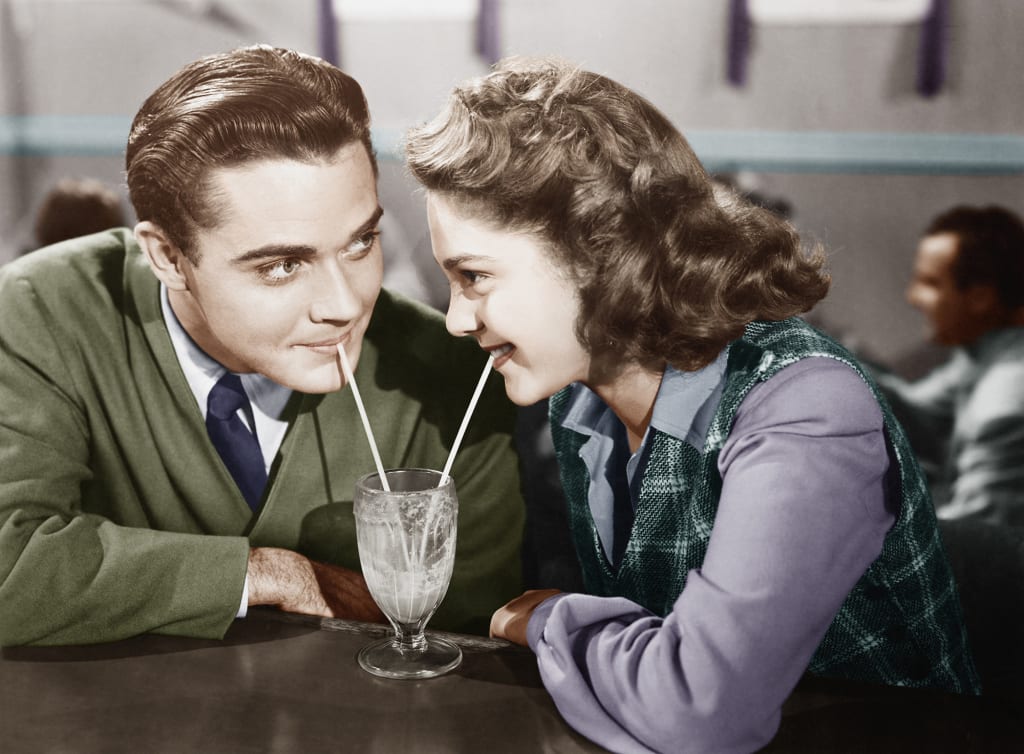No, 'Women and Children First' Rule Was Never a Real Thing
Down the rabbit-hole of chivalry myths

I just love it when random men remind me how much happier women used to be. You know, before we got all crazy and demanded equality. We had blissful lives spent taking care of our husbands, children, scrubbing dishes, and baking pies. We didn't have to worry about who to vote for or any of that hard stuff. We were praised, protected, and taken care of by our strong, chivalrous men.
We were even given priority in maritime disasters because of the 'women and children first' rule.
Oh, how lucky we were, right?
Well, not really. Anyone with a functioning brain and knowledge of history can tell you that.
And that 'women and children first' rule is essentially a myth. Just like many other myths some people like to perpetuate to pretend men of the past were always heroes. They really weren't.
Titanic was one of the exceptions, and not exactly a good one
The idea that women and children should be evacuated first from a sinking ship was made famous by the Titanic disaster. And it has held sway for more than 150 years. Which isn't all that surprising since it's a notion that captures the age-old spirit of chivalry.
But as it turns out, Titanic was an exception rather than any sort of a rule.
A group of Swedish economists studied sea disasters spanning three centuries and involving 15,000 passengers and crew members of more than 30 different nationalities. Disappointingly, they found that famous images of men heroically giving up their lives to save their families as the ship went down are the exact opposite of what generally happened.
Women and children actually had the lowest survival rates, while ships' crews and captains fared the best. And that's because they were the first ones to get to the lifeboats, leaving behind everyone else.
The only two shipwrecks in the study's sample where women had a higher survival rate than men were Titanic and the HMS Birkenhead.
HMS Birkenhead sank in 1852 in the shark-infested waters off the coast of South Africa, and it was the commander who gave the order to save the women and children first. There were only three lifeboats, but none of the 7 women and 13 children lost their lives during that shipwreck - 365 men died instead.
And in the case of Titanic, more than 70% of female passengers survived, compared to less than 20% of men. By contrast, the average survival rate across other wrecks was less than 30% for women and closer to 40% for men.
However, it's documented that Titanic's captain - Edward Smith - had to threaten to shoot men who made a run for the lifeboats before a woman or child to make sure they'd survive. Oh, yes - you read that correctly.
'Every man for himself'
While you could say that the case of HMS Birkenhead was a true example of men's courageous behavior, Titanic wasn't. Because if you have to threaten someone to put others before yourself, that's not exactly a testimony of chivalrous self-sacrifice, isn't it?
Clearly, 'women and children first' wasn't an unwritten thing that everyone did. It wasn't the ultimate act of chivalry that so many people believe it was. It literally happened a couple of times. And I'm guessing it only happened because the two captains who gave the orders knew well that if they didn't do it, their crew members wouldn't care to save anyone else other than themselves. Like they usually did.
And so the study's authors, economists Mikael Elinder and Oscar Erixson from the University of Uppsala, concluded that 'human behavior in life-and-death situations is best captured by the expression 'every man for himself.' Makes perfect sense.
Interestingly, their analysis also showed that the gender gap in death rates has narrowed in disasters since World War I. In other words, since women started holding a relatively higher status in society and weren't entirely dependent on men. So maybe the reason for that diminishing gap was women realizing they aren't weak, helpless creatures who need men to rescue them as they were led to believe for centuries? Just a guess.
But even though it was never a cultural notion, was it ever a legal requirement? Also, no. There was never such a thing as 'women and children first' in the international regulations that set out the evacuation procedures at sea.
That 'rule' is just a myth. And, for some reason, quite a powerful one.
Our idea of chivalry never existed in the first place
The deeper down the rabbit hole of gender norms and stereotypes I go, the more I'm convinced most pieces of conventional wisdom on this topic are entirely made up. 'Women and children first' rule aside, the whole idea of chivalry doesn't exactly hold water to begin with.
It almost makes you think history books were written by grumpy, old white men who refused to reckon with horrible things men did in the past, ignored contributions of essentially half of humanity, and instead manufactured a slightly 'nicer' version of history. Oh, wait - that's kind of what happened.
Funnily enough, some people claim that chivalry died the moment 'liberated' women decided to open doors for themselves rather than wait for men. As usual, feminism is to be blamed for literally anything imaginable.
But can you really kill something that has never truly existed?
During the Middle Ages, chivalry was essentially a tool established to keep thuggish, heavily armed, violent medieval Christian knights in check. You know, to force them to rape less frequently in the lands rewarded to them by warlords.
Yet even when knights did follow a code of chivalry as they understood it, these ideas about honor and good behavior mainly focused on concern for the noble class that knights were part of, often at the expense of the poor. Yes, common peasants or lower-class women were fair game.
So what about all the stories of damsels in distress and knights in shining armor coming to their rescue? Are they all made up then?
Well, pretty much - yes. Those fantasy stories are part of a literary genre called Chivalric Romance. It consisted of the adventures of legendary knights and celebrated an idealized code of civilized behavior that combines loyalty, honor, and courtly love. According to medievalist Richard Walker, the literary conventions adopted in this genre were 'just as much a fiction then as now.'
And our current understanding of chivalry as a code of proper 'masculine' behavior - particularly in relation to women - has little to do with real knights in the Middle Ages and more with European neo-romantic writers in the late 19th century who adapted the word to define ideal male behavior.
Chivalry was a belief that looked good on paper but never really came to fruition as a noble and pure reality. Knights weren't the good guys we think they were. Men didn't heroically stay behind and died like heroes during maritime disasters. And the 'good, old days' weren't better for women.
So how about instead of looking longingly at the idealized past that has only ever existed in our heads, we focus on the future that's free from outdated gender norms and stereotypes manufactured by the patriarchy?
Because no one truly wins if you assume half of the population's only purpose is to breed like crazy and bake pies, and the other half's is to pretend to be thuggish heroes.
Just saying.
This story was originally published on Medium.
About the Creator
Katie Jgln
Sometimes serious, sometimes funny, always stirring the pot. Social sciences nerd based in London. Check out my other social media: www.linktr.ee/katiejgln






Comments
There are no comments for this story
Be the first to respond and start the conversation.